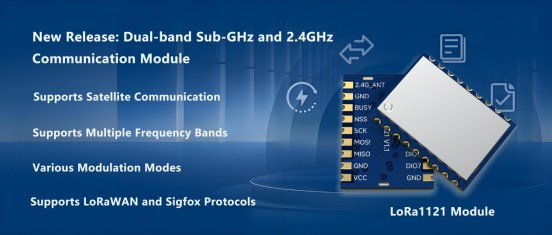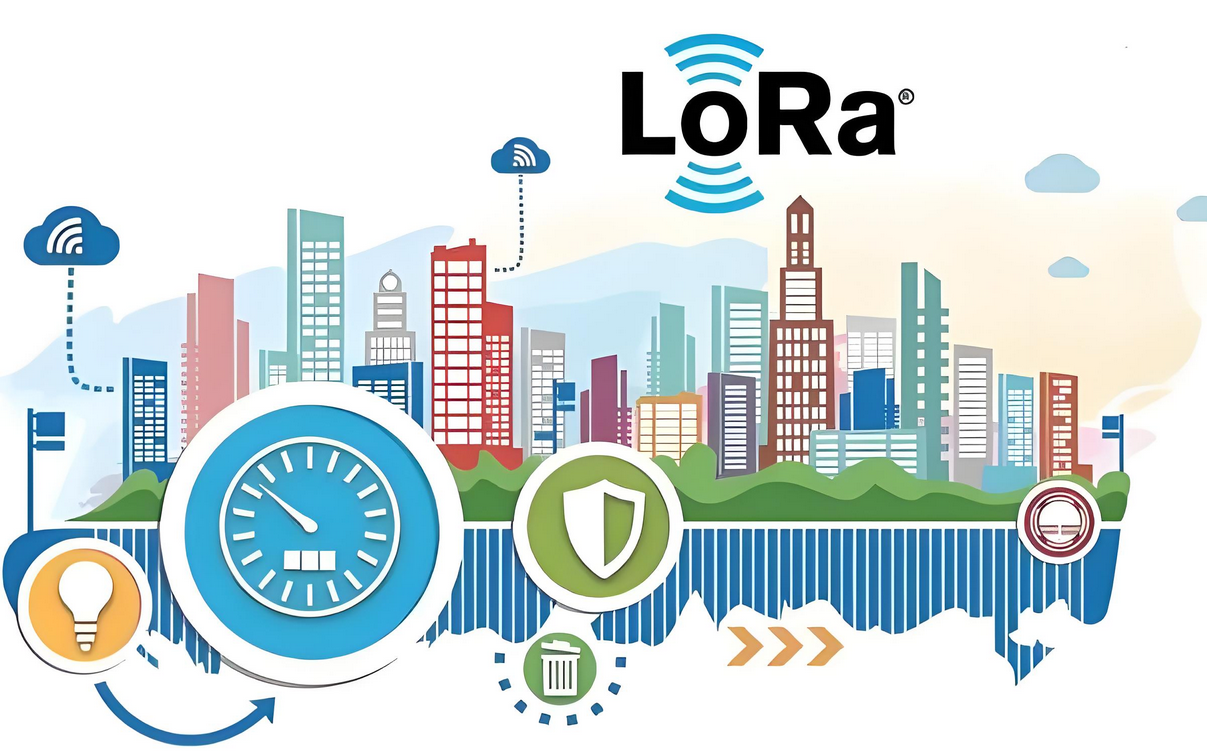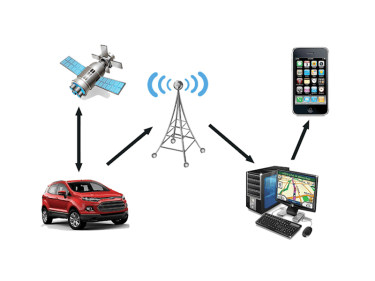Multi-Band Coverage Satellite Communication Module: Flexibly Adapting to Multiple Application Scenarios
The LoRa1121 module utilizes SEMTECH's LR1121 chip, an ultra-low-power, long-range transceiver that supports both global ISM band and 2.4GHz communication. The LoRa1121 supports LoRa and (G)FSK modulation in the Sub-GHz and 2.4GHz bands, as well as Sigfox® modulation in the Sub-GHz band, and long-range frequency hopping spread spectrum (LR-FHSS) in the Sub-GHz, 1.9-2.1GHz, and 2.4GHz ISM bands. The LR1121 complies with the physical layer requirements of the LoRaWAN® specifications released by the LoRa Alliance®, while remaining highly configurable to meet the needs of various applications and proprietary protocols.
Frequency Range: Supports 433/470/868/915 MHz, and can be customized for frequencies between 150 and 960 MHz.
LoRa Modulation Rate: In the Sub-GHz band, the LoRa modulation rate ranges from 0.091 Kbps to 62.5 Kbps. Although the modulation rate is relatively low, LoRa's long-range transmission and strong anti-interference capabilities enable stable communication even at low bandwidths.
FSK Modulation Rate: The FSK modulation rate ranges from 0.6 Kbps to 300 Kbps. FSK modulation offers a higher modulation rate, suitable for applications requiring faster data transmission, though its transmission distance is shorter, making it appropriate for local data transmission.
Main Advantages: The Sub-GHz band excels in long-distance communication with a receiving sensitivity of up to -144 dBm @ BW=62.5 KHz, SF=12. It maintains efficient reception even at very low signal strengths, greatly enhancing the reliability of long-distance communication. The Sub-GHz band offers strong penetration and long-distance coverage capabilities.
Frequency Range: 1900 MHz to 2200 MHz, covering satellite communication bands.
LoRa Modulation Rate: In the S-band (1900 MHz to 2200 MHz), the LoRa modulation rate ranges from 0.292 Kbps to 87.5 Kbps. Compared to the Sub-GHz band, the S-band LoRa modulation rate is slightly higher, making it particularly suitable for satellite communication and remote coverage applications, while maintaining long communication distances and low power consumption.
Main Advantages: The S-band is designed specifically to support satellite communication, suitable for long distances and scenarios with no ground network coverage. It has a receiving sensitivity of up to -132 dBm @ BW=125 KHz, SF=12. With high sensitivity, it maintains effective communication even at lower signal strengths, making it ideal for long-distance satellite links.
2.4 GHz Band
Frequency Range: 2400–2500 MHz, a globally used ISM band.
LoRa Modulation Rate: In the 2.4 GHz band, the LoRa modulation rate ranges from 0.476 Kbps to 87.5 Kbps. This band supports higher transmission rates and maintains good stability over short distances, making it suitable for applications with relatively large data volumes.
Main Advantages: This band supports higher data transfer rates, suitable for high-speed communication needs over short to medium distances, and is legally usable worldwide, ensuring good compatibility.
LR-FHSS (Long Range Frequency Hopping Spread Spectrum) Applicable Bands: Sub-GHz, S-Band, 2.4 GHz
LR-FHSS Technology: By hopping between multiple frequencies, LR-FHSS significantly enhances the system's resistance to interference and extends transmission distances. In the Sub-GHz, S-Band, and 2.4 GHz bands, LR-FHSS notably improves the stability and range of data transmission.
Communication Protocol Support
Supported Protocols: Supports Sigfox protocol and LR-FHSS (LoRa Time-Frequency Hopping Spread Spectrum Technology). These technologies and protocols further enhance communication interference resistance and device connectivity.
LoRaWAN Protocol: The LoRa1121 supports the LoRaWAN communication protocol, functioning as a LoRaWAN node for integration into existing LoRaWAN networks, providing reliable and flexible IoT connectivity solutions.
Characteristics of Sub-GHz Wireless Communication
Sub-GHz wireless communication operates at frequencies below 1 GHz and offers several advantages, including long-distance transmission, low power consumption, lower frequency congestion, and strong penetration capabilities. It is widely used in various applications.
Long-Distance Transmission: Sub-GHz signals have favorable propagation characteristics, allowing them to penetrate obstacles such as walls and vegetation. Consequently, under similar power conditions, the transmission distance is typically greater than that of higher frequency bands like 2.4 GHz, making it suitable for applications requiring wide-area coverage.
 +86-755-23080616
+86-755-23080616
 sales@nicerf.com
sales@nicerf.com
Website: https://www.nicerf.com/
Address: 309-314, 3/F, Bldg A, Hongdu business building, Zone 43, Baoan Dist, Shenzhen, China






